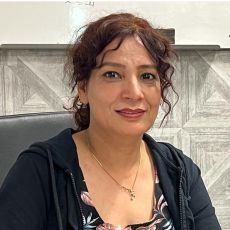
Healthy Active Living Education (PPL1O)
Course Description
The grade 9 course emphasizes regular participation in a variety of enjoyable physical activities that promote lifelong healthy active living. Students will learn movement skills and principles, ways to improve personal fitness and physical competence, and safety and injury prevention. Students will investigate issues related to healthy sexuality and the use and abuse of alcohol, tobacco and other drugs, and will participate in activities designed to develop goal setting, communication and social skills.
For Ministry Guideline Click Here
| Units | Descriptions | Length (Approximately) |
|---|---|---|
| Unit 1 | Healthy Living Three major topics compromise this unit. They are substance abuse (definition of a drug, drugs and their effects, narcotics, ecstasy, alcohol, tobacco; growth and sexuality (what is sexuality, stages of sexuality, female and male anatomy, menstrual cycle, pregnancy, STD’s, sexual health); and Personal Safety (injuries, non-physical abuse, injury prevention, young workers safety, healthy relationships, and strategies for personal safety). |
25 hours |
| Unit 2 | Living Skills The focus of this skills-based unit is three-fold: Decision-Making Skills, Conflict Resolution Skills, and Social Skills. |
23 hours |
| Unit 3 | Physically Activity Students will learn and participate in three activities: Orienteering, Line Dancing and Bowling. |
25 hours |
| Unit 4 | Active Living This Unit is a little different in that you will do this unit alongside the others. That is, while completing Unit One you are also working on this unit and while completing Unit Two you are also completing this unit. Each week for 16 weeks you will complete a physical activity four times a week for 30 minutes each time. You will complete an Activity log for each time you participate that your vitality coach signs off on. Each week has a theme with information and activities. |
32 hours |
| Final Culminating Task (3 Hrs)+ Final Exam (2 Hrs) | 5 hours | |
| Total | 110 hours | |
Overall Curriculum Expectations
By the end of this course, students will:
- Active Participation - participate actively and regularly in a wide variety of physical activities and demonstrate an understanding of factors that can influence and support their participation in physical activity now and throughout their lives.
- Physical Fitness - demonstrate an understanding of the importance of being physically active and apply physical fitness concepts and practices that contribute to healthy, active living.
- Safety - demonstrate responsibility for their own safety and the safety of others as they participate in physical activities.
By the end of this course, students will:
- Movement Skills and Concepts - perform movement skills, demonstrating an understanding of the basic requirements of the skills and applying movement concepts as appropriate, as they engage in a variety of physical activities.
- Movement Strategies - apply movement strategies appropriately, demonstrating an understanding of the components of a variety of physical activities, in order to enhance their ability to participate successfully in those.
By the end of this course, students will:
- Understanding Health Concepts - demonstrate an understanding of factors that contribute to healthy development.
- Making Healthy Choices - demonstrate the ability to apply health knowledge and living skills to make reasoned decisions and take appropriate actions relating to their personal health and well-being.
- Making Connections for Healthy Living - demonstrate the ability to make connections that relate to health and well-being – how their choices and behaviors affect both themselves and others, and how factors in the world around them affect their own and others’ health and well-being.
Assessment & Evaluation of student performance
Formative assessments are learning practices that provide important feedback to student progress. Examples include homework and quizzes.
Summative assessments form a foundation for final mark allotment at the end of the unit, term and final evaluation.
An achievement chart will be given to students at regular intervals and the purpose of the charts is to provide feedback to students in relation to content and performance strands.
| Knowledge and understanding | Communication | Thinking Inquiry and Problem solving | Application |
|---|---|---|---|
| 25% | 25% | 25% | 25% |
Unit Tests, Written assignments, presentations, Classroom Observations and Classroom conversations.










